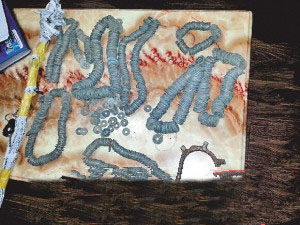Acheng villagers used metal detectors to dig 2,000 ancient coins in the field

After the villagers in the northeastern city of Azerbaijan stole metal artifacts in the field with metal detectors , they were reported by villagers in the same village. The District Cultural Comprehensive Law Enforcement Team and the public security department jointly registered and investigated the suspects who had stolen the cultural relics arrested on the evening of the 11th. Police Collect a large number of stolen gold artifacts. The stolen cultural relics have been identified as historical relics by the provincial cultural relics appraisal department.
According to Wang Baojun, the captain of the Acheng District Cultural Law Enforcement Comprehensive Brigade, on the 10th, the brigade received reports from Mahuitun villagers in Soutian Town, claiming that suspicious villagers used metal detectors to “tug the treasures†in the fields. The law enforcement brigade immediately affiliated with the public security department to investigate and, at 19:00 on the 11th, arrested the criminal suspect at his home. According to the report, the suspect Liu and the villager Ruan used two metal detectors and other crime tools to carry out probes in the field for several days. The villagers who had been cultivated in the fields discovered and reported.
According to reports, Liu and Yu had stolen 2329 pieces of gold coins, 20 pieces of gold armor pieces, and a golden piece of arable land, a relatively complete piece of Jindai horse parts and some pieces of Jindai stove pot.
According to the deputy director of the Acheng District Institute of Cultural Affairs, the location of the horseback is 500 meters south of Ma Hui Tun Tun. It is a cultural heritage site, and the main cultural relics are buried. In the 1990s, ancient copper coins were discovered after the paddy fields were reformed. The villagers also discovered artifacts such as copper coins during the grazing process. The stolen items were identified as historical artifacts by the provincial cultural relics appraisal department.